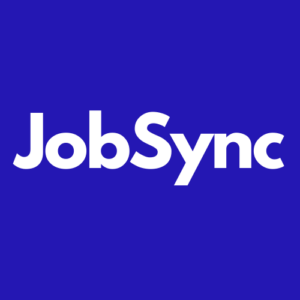 What experiences make candidates more willing to reapply, refer others, and advocate for a brand? We reflect on the best practices of CandE award winners and unpack their most copyable approaches.
What experiences make candidates more willing to reapply, refer others, and advocate for a brand? We reflect on the best practices of CandE award winners and unpack their most copyable approaches.
A standout talent trend of 2025 is the sheer volume of applications employers receive. Right now, it’s not a candidate market. Overall unemployment may be low, but fewer businesses are hiring and workers aren’t quitting. It’s taking 50% longer for salaried workers to find full-time employment, and the dynamic is affecting white-collar professions the most.
During application influxes, good candidates get buried. It’s harder for qualified candidates to stand out, and it’s harder for lean talent acquisition (TA) teams to find the right talent while delivering a positive candidate experience. Automation is easing some top-of-funnel weight, but at what cost? Every candidate knows the misery of auto-rejections, ‘bots, and black holes. Finding a job can be savage.
Thankfully, there are great candidate experiences out there with awards to prove it.
Each year, the Candidate Experience Benchmark Research Program — the CandEs — recognizes companies that provide exceptional candidate experiences during recruitment. 125 companies registered for the 2024 awards, collecting feedback from over 230,000 job candidates, 90% of whom were rejected. In North America, 52 organizations received the highest positive candidate experience ratings. Many are repeat winners, delivering great candidate experiences year after year, even as the labor market shifts and cools around them.
What are they doing that others aren’t?
We spoke to three CandE winners to find out.
Resentment is Up Again
Before we delve into best practices, let’s understand the current candidate sentiment: it’s not great.
Kevin Grossman, the VP of Research at ERE Media and responsible for the CandE research, says negative sentiment grew dramatically in 2024: “The percentage of candidates who say they will never interact with that employer again because the recruiting process was so horrific has never been higher. The average is 14%, but in the finance & insurance and technology industries, resentment is at 25% and 20% respectively. That’s really high.”
Candidate “resentment,” as Grossman calls it, has material business impacts. Contented candidates are more willing to apply again, refer others, make purchases from the company, and advocate for the brand, even though they didn’t get hired. Resentful candidates swear off the brand for life and share their negative experiences publicly. Employers depend on referrals for 20% to 40% of their hires, CandE research shows. You want candidates on your side even if you can’t hire them.
TA teams can’t change the market conditions or candidates’ growing resentment. But they can improve their recruiting delivery so that even rejected candidates feel their experience was positive and fair.
CandE winners have competitive differentiators that do just that. Here are their top recommendations.
1. Prioritize quality over quantity.
Don’t underestimate how a recruiter’s workload can impact the candidate experience. It is crucial to recognize the finite limit of requisitions a recruiter can manage simultaneously.
For the past few years, CandE’s highest-rated employers have been consistent and timely with their candidate dispositions. Many are making go/no-go decisions within 3-5 days. That’s a tall order when the applicant rate per job is escalating at double-digit rates.
Lynda Whittemore is the Director of Talent Acquisition for Room & Board, a repeat CandE award winner that hires around 150 people a year. She created a load-balancing process to manage workload surges. “We put requisitions ‘on recruiting hold’ instead of just loading them onto the team, because candidate experience falls when your workload is too high,” she says. Whittemore collaborates closely with company leaders to prioritize these ‘held’ roles, ensuring that as capacity becomes available, they focus on the most critical positions first.
Getting buy-in from the C-suite is a never-ending challenge for TA leaders. Linking ‘rec holds’ to a quality candidate experience is smart. It reassures leadership that a seemingly counterintuitive decision (not filling a position) is rooted in sound business strategy. “I’m inside a culture that takes it seriously and that helps us move mountains,” Whittemore says.
2. Use technology to respect the candidate’s time.
The longer candidates have to wait, the more resentful they become. Optimized recruiting tech can keep candidates in the loop and make space for recruiters to be more present and engaged during the hiring process.
In CandE’s 2024 study, 29% of North America candidates reported not hearing back from employers 1-2+ months after applying. Long wait periods raised negative sentiment dramatically, and good candidates don’t stick around to hear back from recruiters.
“The number one reason why candidates, especially professional and management ones, withdraw from the recruiting process is because their time is disrespected during the screening and interview stage,” Grossman says. He notes that CandE’s highest-rated employers all used recruiting technologies like texting and auto responses to manage hiring volume and keep candidates informed.
That includes proud first-time CandE winner the Friedkin Group. Elizabeth Cearley, the company’s Talent Acquisition Manager, says the company “has some really good technology in place that has helped us with interview scheduling, surveys, interview note taking, and so on.” Tech helps her recruiters “spend more time and focus on the candidate.”
For Whittemore, technology is an obvious way to load-balance the recruiting team. Room & Board uses artificial intelligence in its processes, especially in job descriptions and candidate communications. “Technology is on our mind because we’re a small team. As artificial intelligence becomes smarter regarding candidate behavior, it opens up a lot of opportunities for us to leverage technology and streamline our workflow, but keep that personal level we strive to accomplish, that personalized human touch,” she says.
3. Don’t over-automate.
The human aspect is one of the most important parts of the candidate experience. Understand your candidate’s journey and when it is most critical to have a human connection.
Grossman points out that while CandE award winners are leading the pack on smart technology adoption, they are also keenly aware that candidates want the human touch. “Automation has been the bane of candidates for a long time. That’s the unfortunate reality,” he says.
In 2024, candidate feedback included AI for the first time. Their perception wasn’t great. Many told CandE researchers that AI was making all the selection decisions and automatically rejecting them without human involvement. That’s not generally true, but clearly candidates oppose blanket automation.
Bradley Cooper, AVP Technology at cloud-based staffing firm SASR Workforce Solutions, a three-time CandE winner, knows this problem first hand. “When I joined the company, we had over-automated the process. When a candidate hit our website, they were asked for Social Security numbers before talking to anybody,” he says. “Basically, candidates just got thrown into a funnel and it was all automated with no way to communicate with the candidates.”
The company scrutinized its processes to learn where candidates were getting stuck. Now, they have a robust talent experience management platform that leads candidates to the right-fit job, gates them through the application process, and automatically schedules an interview—all while providing access to recruiters for a more personalized touch. “It’s trying to find those balance points of where do you want to give the candidate the technology to get to the next point without friction, and where is it most critical to have that human connection?” Cooper says.
4. Focus on process.
Removing friction greatly improves the candidate experience. Cutting unneeded steps and eliminating tasks that add no purpose sends a positive message to candidates that their time and effort are valued.
A focus area for all our CandE award winners is streamlining their processes. “We heard feedback that our application process was taking people anywhere from five minutes to 25 minutes, which was really crazy. We got it down to 2 minutes and 30 seconds,” Cearley says. The Friedkin Group is now working on its interview process, using technology to automate interview scheduling and get feedback faster.
In 2025, Cooper will focus on “going back to our processes, building collaboration between operations and recruiting, to make sure everybody understands how — once a candidate makes it through the process — we can get them to work.” Cooper’s team hires at volume on very tight timelines and in difficult markets. Clarity of process to the first day on the job is critical.
The word “collaboration” often comes up when our experts discuss candidate experience. Recruiting is a whole-company affair that demands whole-company thinking. “We’ve just implemented a 30-day check-in with our leaders,” Cearley says. “So if a rec is open at 30 days, we sit down and talk with them to understand what’s happening in their group, business, and other factors influencing the delay. We can understand those and take action.”
5. Use data for continual improvements.
Data drives the candidate experience. It allows talent teams to make quick and effective adjustments to enhance the candidate journey and measure the impact of changes.
Data is the backbone of any successful candidate experience. The highest-rated employers in the CandE research were far more likely to align recruiter performance metrics with candidate experience, using data to drive improvements.
One place where candidate experience shows up in the data, that many companies are not tracking, is post-hire data. “Making the application process better frees up teams to make the selection process better, and the onboarding process better, and then teams perform better. All of those things result in higher performance for companies,” says Job Sync’s CEO Alex Murphy, noting a domino effect of success. “You see performance metrics by employee improve, and it’s hard to say at a macro level how candidate experiences influenced that, but it absolutely has.”
Unlocking the power of your data is both a skill and a continuous process. Cearley says she “wanted a CandE award for seven years” before finally landing one. Since the CandE’s are based on self-collected data, that’s years’ worth of gathering candidate feedback, mapping it to business outcomes, and making incremental changes year over year. Cearley plans to continue streamlining and optimizing The Friedkin Group’s systems to “hopefully get another CandE award this year.”
“That’s the goal. I’m excited because we started doing our surveys already, so we’re going to get a lot more data this year,” she adds. It’s not trite to say that what gets measured gets managed, and the CandE Award process is a clear example of data’s potency in driving those changes.



